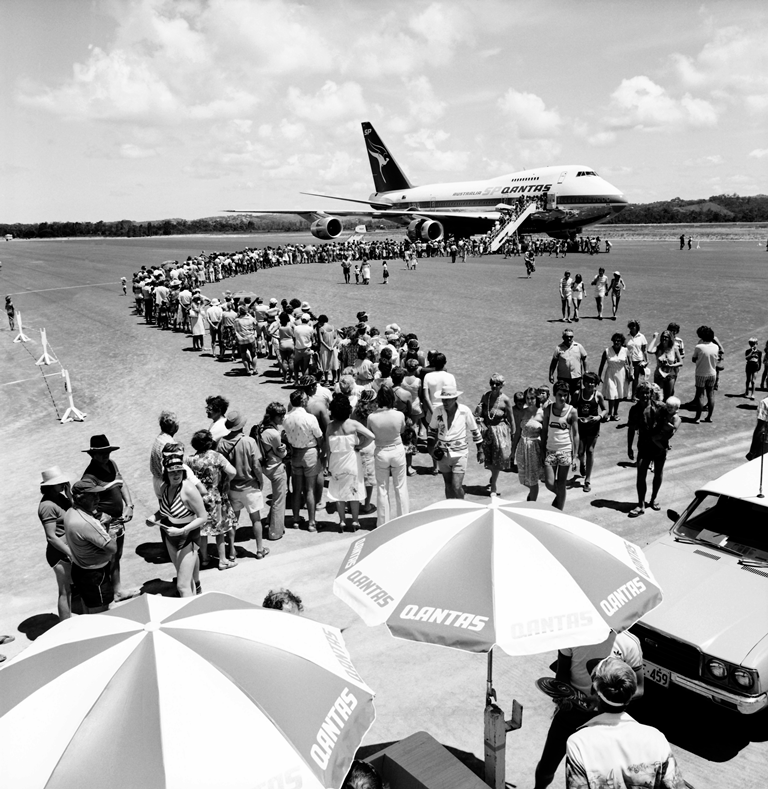
Pocket rocket: After taking delivery of the aircraft, one Qantas pilot said the SP “handled like a sports car”.
The Boeing 747, one of the world’s most loved and iconic passenger aircraft, turned 50 recently.
Once a regular sight at airports around the globe, the 747 with its distinctive bump is slowly fading into the twilight of aviation history, although the freighter version remains popular
But the birthday got us thinking about a lesser known version of the 747, the shorter but formidable 747 Special Performance. Or the 747SP for short.
It first took to the skies in 1975 and just over 40 of the type were ever made. The SP ranked as having the longest range of any passenger jet aircraft until the arrival of the Boeing 747-400 in 1988.
Qantas engineers had their own definition of what SP stood for, given it was a shrunken version of the other 747s in our fleet – they affectionately dubbed it the ‘Stubby Puppy’.

Lining up: More than 25,000 people had a look inside the first Qantas SP during a promotional tour. Eighties fashion at its best
It was 14 metres shorter than the 747-100 but had the same amount of engine thrust and was said to handle like a sports car.
We first deployed the SP on our flights from Sydney to Wellington instead of the long haul missions the aircraft was originally designed for.
But we had our reasons. A comment from the Qantas staff newsletter in the early 1980s said the aircraft flying out of Wellington, “was a spectacular performer from a short and hairy New Zealand runway with around 5800 feet of available concrete at the time.”
One memorable trip across the Tasman saw the SP carry six million doses of sheep vaccine, 1.3 tonnes of hair dryers and one dog (breed unknown). Also, people.
Qantas would go on to operate two of the type, regos VH-EAA and VH-EAB.
They spent most of their time flying across the Pacific to Los Angeles and San Francisco and on flights into Asia.
The SP is still remembered fondly by Qantas pilots.
Captain Peter Probert, who now flies our Airbus A380s, described a flight he operated in 1990 between Bahrain and Singapore saying the SP “took off like a startled angel returning to heaven” with a phenomenal rate of climb even with a full payload.
“At the end of the day, she looked very cool and was a head turner,” Captain Probert said.
Sadly only a handful of the 40-something SPs made remain in service. NASA’s Stratospheric Observatory for Infrared Astronomy uses a modified SP which carries a 2.5 metre diameter reflecting telescope.
And if you have a spare $13 million you can pick up the Qatari royal family’s old SP, first purchased in 1979. We imagine the for-sale ad reads something like: One owner, full service history, limited mileage and a whole lot of power.
